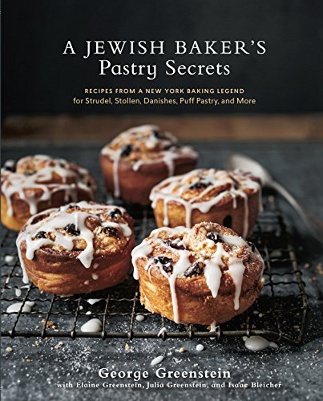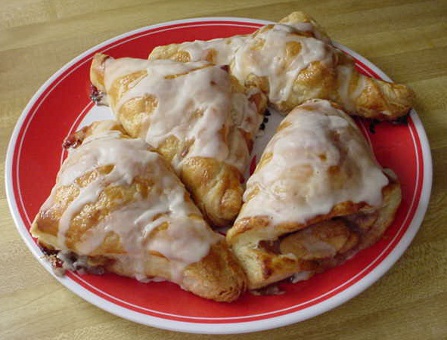

Lots of Old-World Style Goodies

I think I gained at least five pounds just reading this book. There are so many scrumptious recipes and insider techniques for using them in this book that it could easily keep a home baker in new creations for years. The strong point of these recipes is that they can be used in multiple ways by changing the fillings, toppings, and shaping to come up with different types of pastries.
After sections introducing the home baker to the necessary equipment, gadgets, ingredients, and basic techniques needed in order to create these masterpieces, the book gets into the preparation of the fillings and toppings that are mixed-and-matched with various types of doughs such as Almond Paste Filling, Apricot Butter, and Chocolate Custard, for example.
The text is dotted with “Baker's Secret” entries giving more insider information on various topics such as on how to shape various types of dough, how to choose the best ingredients, and the best way to freeze and thaw extra portions. The recipe and technique instructions and hints are clearly presented and explained.
The book has no photographs to aid home bakers in producing bakery-quality final results, which lost the book a half-star in its rating.
The recipes for the doughs are the main event of the book. Most of the recipes given such as Bundt (not the formed cake that most people think of), Babka, Gugelhopf, Stollen, and Strudel make fairly large amounts, but clear instructions are given on how to store the excess doughs for later use in other recipes. The flexibility of each of these doughs when paired with different fillings or shapes to make the many old-world pastries that were a mainstay of local ethnic bakeries is nothing short of astounding.

Be aware that there are some errors in quantity in a few of the recipes which result in some inconvenient results. An example was the recipe for apple turnovers that claimed to require six cups of prepared apple filling. I dutifully peeled, cored, and sliced enough apples to make up the six cups only to find once the puff pastry dough was prepared that I only needed half of the apple filling. There was no way the additional filling could be crammed into those turnovers! That left me with three cups of prepared filling that had to be used within a day or two and required me to make more pastries that I really didn’t need. Luckily my neighbors gained from the error in extra treats, but it’s not an event I’d care to repeat.
Luckily there aren’t a lot of these quantity errors, but be aware as you do your prep work that if it seems like too much, you just might be right.
In spite of the lack of how-to photographs or diagrams and a few blips in amounts, this book is recommended for both beginners and experienced home bakers. Beginners might want to check other available baking books with illustrations if they need extra help or even give a call to a friendly experienced home baker for some pointers to help with their confidence and to smooth their way to success.